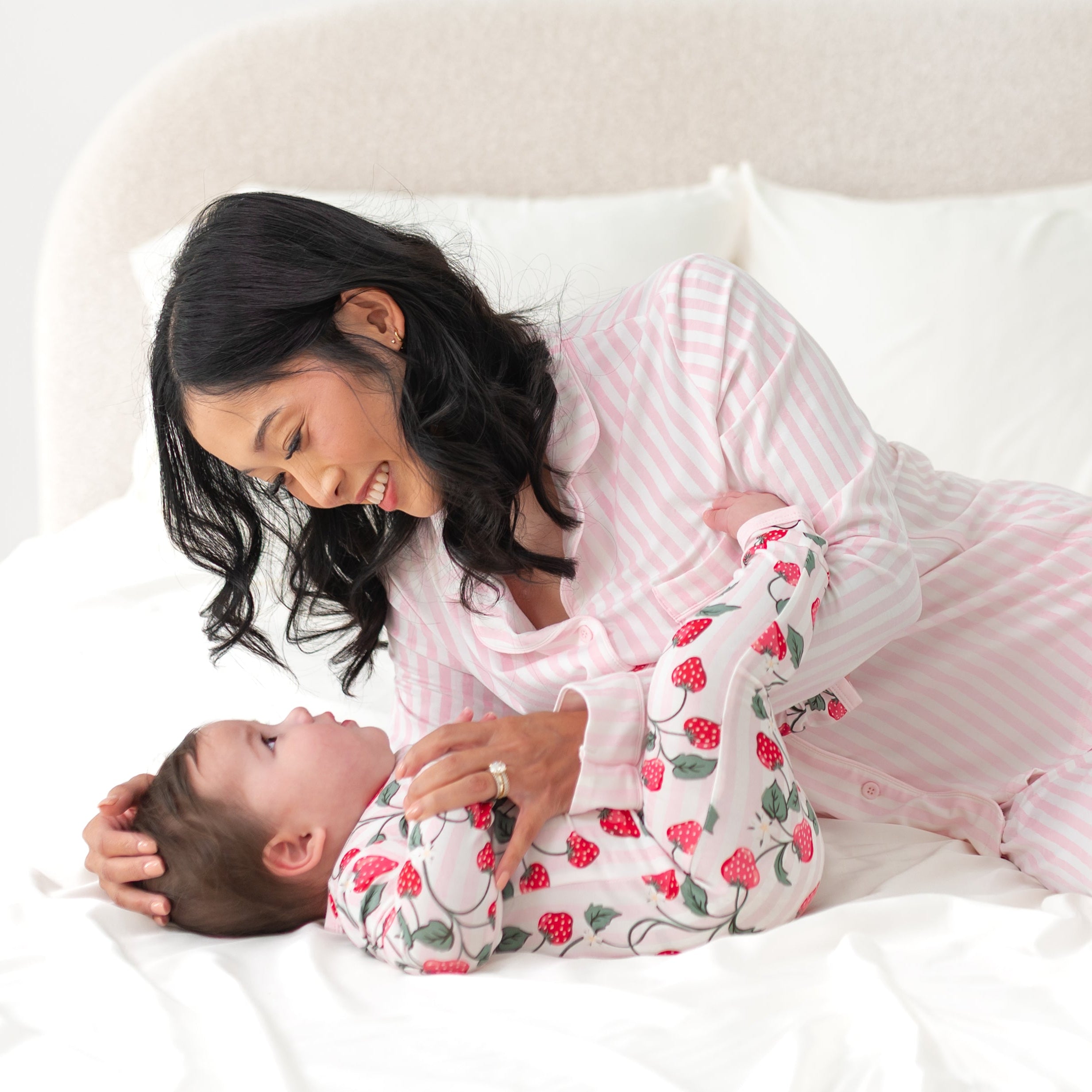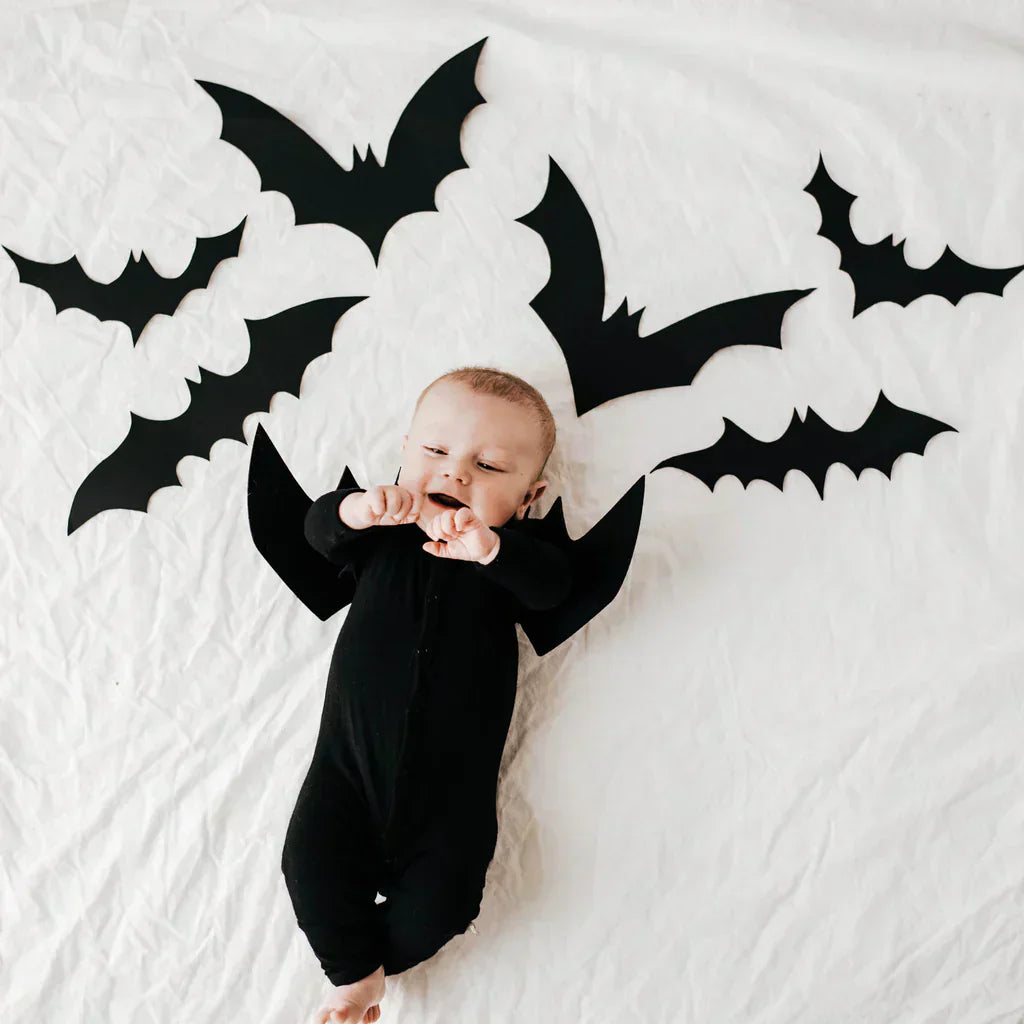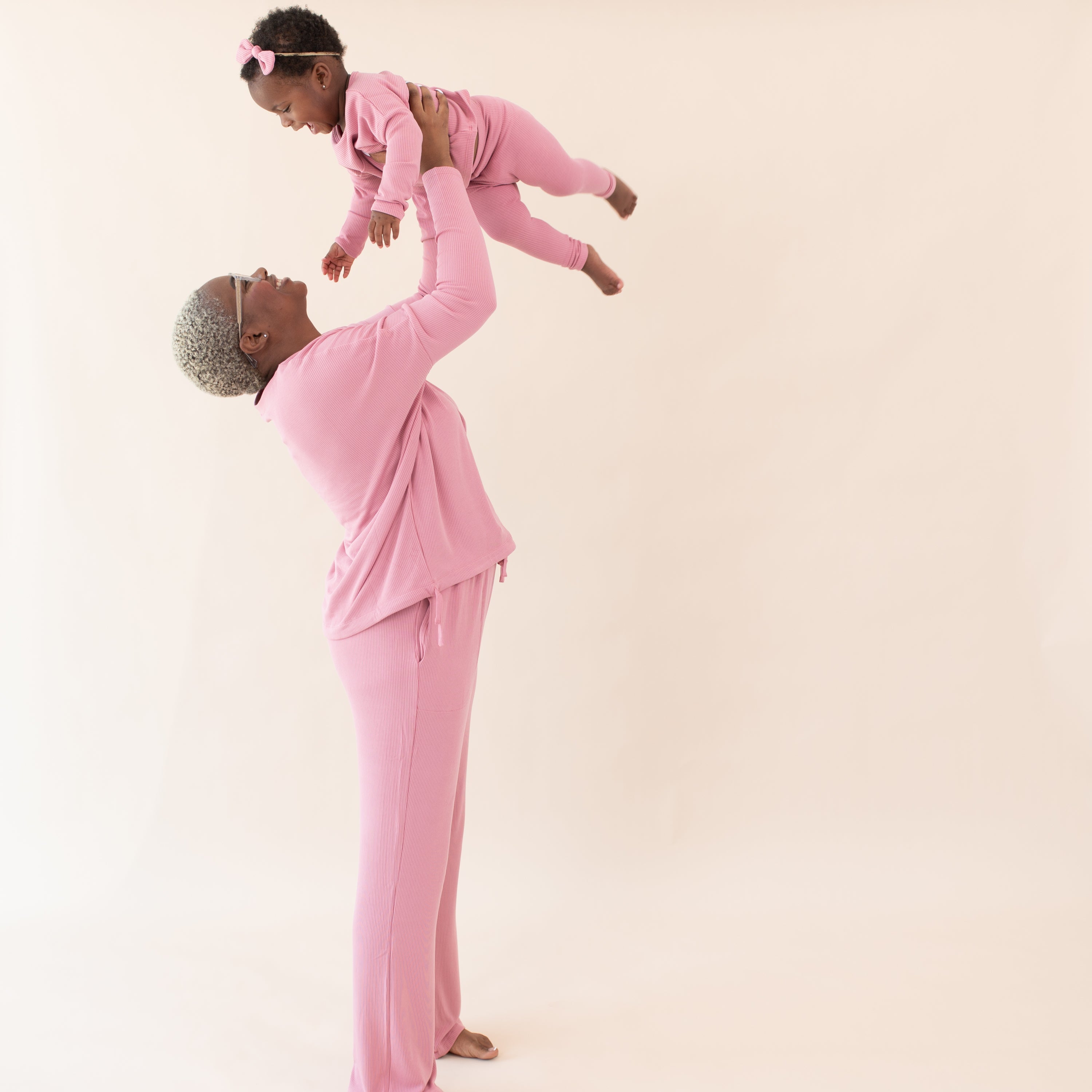Kyte Baby recently hosted Erin Junker, Pediatric Sleep Consultant and Owner of The Happy Sleep Company, on our Instagram account for a Takeover all about infant and toddler sleep! And, we got loads of questions! Erin has gathered some of the most popular questions as well as many of those she didn’t get to answer during the Takeover into this blog post. From catnaps to crib transitions, from time changes to sound machines, here you go, Mamas! Answers to so many baby sleep questions!
My baby will only nap for 30 to 45 minutes at a time! Why?!
At around the 30-45 minute mark into the sleep cycle, your baby is in a lighter stage of sleep, trying to transition from one sleep cycle to the next. She is rustling, she is stirring, maybe her eyelids are even fluttering a little. If your baby went into the crib initially with a “sleep prop” (like feeding to sleep, rocking to a super-drowsy state, using a pacifier, etc.), it is likely that she is going to wake up fully during that light stage of sleep and not know how to get back to sleep on her own. My tips (and there is more info on cat-naps on my blog!):
- Avoid sleep props: Sleep props (like pacifiers, rocking, bouncing, swaying-vigourously-under-the-kitchen-hood-fan-for-20-minutes-before-each-nap, etc.) may get your baby to sleep, but they will also keep your baby from learning how to fall asleep independently. And, if your little one cannot fall to sleep independently, she will not be able to fall back to sleep on her own, whether that’s 45-minutes into a nap, or at 2 a.m.
- Respect age-appropriate awake times – if sleep props are the number one culprit of cat-naps, overtiredness is a close second. Follow age-appropriate awake times, and avoid letting your baby get overtired before naptime – hitting those key sleep windows can go a long way to helping extend naps.
- Put baby down awake: Not drowsy, nor already asleep – awake! This is how your little one will learn to go to sleep and then back to sleep independent of sleep props.
- Give baby some time: When baby wakes – whether 45 minutes into a nap, or throughout the night – give your little one some time; she might surprise you! Allow her to use (or being to develop!) the skills needed to link her sleep cycles together and get more rest. If she is upset, you will of course provide reassurance and comfort; but, giving her a little time to begin to work on those healthy sleep skills first may just lead to the end of those cat-naps!
Is there a way to end co-sleeping without Cry-It-Out?
Many clients ask us about “Cry it out” and if CIO is all that sleep coaching is – it is not. “Cry it out” is a method of sleep training that is also often referred to as “extinction,” and involves leaving your child alone until they fall asleep without support. This is NOT my approach or philosophy for babies’ sleep. It is very important to the entire process of your child successfully learning independent sleep, that you be there for your child to provide ongoing support, guidance, love and reassurance as they are learning. It is also very important to understand, however, that there will inevitably be tears involved when your child is learning any new skill, and learning healthy sleep habits is no exception. What is important is managing the protest that comes along with your child undergoing a big change and learning a new skill, so that they learn quickly with tons of love and support and consistency. This might involved timed check-ins to offer reassurance and hugs, it might even involve a strategy where you stay in the room with your baby the whole time while they are learning to fall asleep, but whatever strategy you decide on, it is essential that you be consistent so babe does not become confused. The goal is for your baby to develop self-soothing skills while having support from a parent.

One of my twins is a better sleeper than the other. How do I avoid one overtired baby in the p.m. hours?
It’s almost always the case that one twin is a better sleeper than the other! I recommend not letting one sleep more than 30 minutes longer than the other (in the morning or at any of the naps) to help keep them on a similar schedule.
How much awake time should a four month old be having, and how many naps through the day?
Great question! Here are some general guidelines:
Newborns: 45-60 minutes of awake time, 5-6 naps.
3-4 months: 1 hour 15 minutes to 1 hour 30 minutes of awake time, 4 naps
4-5 months: 1 hour 30 minutes to 2 hours of awake time, 3-4 naps
5-6 months: 2 hours to 2 hours 15 minutes of awake time, 3 naps
7/7 months to 16/18 months: 2 hours 30 minutes to 3 hours of awake time, 2 naps
16 months to 2 years: a nap at noon each day for 2-3 hours
2.5-3/4 years: a nap at around 12/1pm each day for 1-2 hours
Daylight Saving Time is coming up – how can I prepare?
Oh, the dreaded Fall Back – the change in Daylight Savings Time that occurs each autumn that has parents of already-early wakers wanting to run for the hills. Good news! There are ways to manage Daylight Savings Time that will result in much less stress for your family.
The first option is to do nothing. This is a good option if your child is already waking around 6:30/7 a.m. each day and going to bed at 7 p.m., and has shown a good ability to go with the flow and not be very affected by small scheduling changes.
The second option is to slowly change your child’s schedule over the course of a few days prior to the Daylight Savings change. On Wednesday, before the weekend time change, put your child to bed 15 minutes later than normal, in hopes that he wakes up 15 minutes later in the morning (I can’t guarantee this will happen, because of our internal clocks, but it does work for some!). Also, put him down for his naps 15 minutes later than usual. Keep putting him to bed 15 minutes later each night until the night of the time change.
The third option is to stick to the regular schedule leading up to the time change and- once the day of the time change has passed – alter the schedule only as much as your child can handle. The first night, you may only get to a 6:00 p.m. bedtime, for example, and your little one will go to bed earlier than normal (by the actual time on the clock). After a few days, he should settle into his normal schedule.
More time change info on my blog! The very important thing to remember is that, as with any change or “bump” in your child’s normal sleep patterns, this too shall pass with time and LOTS of consistency on your part!

Moving our toddler into a big boy bed – any tips on the transition?
Yes, lots!
Make sure your little one is ready: For many parents, it can be tempting to move your child from a crib to a big bed as soon as they’ve turned two, but, as I’ve blogged about before, many children are not ready for the big kid bed until closer to 3-3.5 years of age. Try not to rush the transition (this is VERY important!) – if your child sleeps well in his crib without much complaint, don’t make a change yet.
Get your child involved in the switch: Let your child be part of the decision-making process about his new sleep space – ensure he’s involved in picking out the new bed and bedding, so that he picks a bed that makes him feel comfy and safe, and he feels like he has some control over this very new situation.
Keep your child’s room the same, if possible: Again, changing from a crib to a bed is already a big change, and many parents make the mistake of doing a total overhaul on the décor in their child’s room, or even switching to a new room altogether, while simultaneously making the switch to a big bed.
Allow a comfort object: Amidst the big change of the big bed, your child may be longing for items that are familiar and provide comfort, like a favourite blankie or stuffy. Allow your child one comfort object in his new bed, so he feels safe and secure, but not a bunch of various items that will distract from sleep.
Keep your regular routines: If you are a former client of mine, you know I love routines! And, you know how a good, consistent bedtime routine can go a long way towards helping your little one prepare for a great sleep each night. Don’t allow this to fall by the wayside when you make the transition to the big kid bed – routine is more important than ever in order to help your little one feel safe and familiar in this new situation.
Firmness and empathy: Again, this is a big change, and it’s important that your child understands that you recognize this. It’s very common that your child may try to engage in conversation when you attempt to leave the room at bedtime. To manage this, make a new rule that your child is allowed to ask one question/tell you one thing at bedtime, before you leave the room. This will help him to know that you are listening, but putting boundaries on it will ensure your child still understands that it is time for bed. If he still tries to engage you in conversation, you can tell him “We’ll talk about all of that tomorrow, but right now it’s sleep time.” Be positive and respectful, but boring and consistent. If he tries to get out of bed, lead him back with minimal interaction (again, be boring!), and tell him, “it’s time for bed.” Be patient, but firm, so he understands that the rules about sleep have not changed just because the bed did!
We’ve done sleep training – how do we avoid falling into bad habits during illness, etc.?
As a Mama, I know it can be difficult to stick with your sleep plan and new habits for managing naps and night wakes when your baby is feeling ill. We of course want you to be able to comfort your little one if he is sick, while also ensuring that he is getting proper rest and you are not reverting to previous sleep habits once you’ve done sleep coaching.
Regarding coughing and congestion, of course do whatever you can before putting your child down to sleep to relieve this (with anything your doctor recommends, or any natural items you may be using, such as saline spray, a nasal aspirator, etc.). If he wakes due to a light cough and he is not protesting a great deal nor in distress, I suggest you allow him the opportunity first for a few minutes to go back to sleep on his own ( Of course, if he is ever having a very rough hacking cough or in distress, you would go to him immediately to care for him). If you then need to go in his room, you can check his temperature, change his diaper (if necessary), and give him any medicine he may need/that your doctor recommends. Afterwards, give your baby a quick hug and cuddle, his comfort object (blankie, small soft toy, etc., if you are using one), and then put him back to bed to get healthy sleep.
If your child is ever very sick (with the stomach flu, etc.), the best thing is to ensure he has what he needs (medicine, etc.) and remember he will sleep best in his crib (not in your bed!), as that is what he is now used to. If you felt you needed to be near him in a situation like this, then absolutely you can be. Once he is asleep, you could go camp out in his room so you can watch him and monitor him through the night. Don’t disrupt his heathy sleep by pulling him into your bed; sacrifice your comfort for the night, if need be.
Is a sound machine a good investment for baby’s room?
If you live on a busy street, have a loud pet, or have an older child sometimes being loud and disturbing naptime, a sound machine may be a great idea! When using a sound machine, I recommend it be on a “white noise” setting, and that it run continuously, not on a timer. I also recommend, for safety, that it be placed about 5-10 feet from your child’s crib, and that it be about the same volume level that you’d experience when standing under a soft shower (under 50 decibels). My favourite sound machine, by Conair, has a “white noise” setting, a timer that can be turned OFF, and a volume function with a wide range of settings

Can babies sleep through the night successfully while sleeping in the same room as parents?
100% yes! Health regulators in Canada and the US recommend that babies sleep in the same room as a parent until at least 6 months, and some recommendations discuss up to a year, but it is certainly possible to get everyone healthy rest in that situation, so don’t feel pressured to move baby to their own room until you’re ready.
Have more questions? Erin Junker is a Professional Infant & Toddler Sleep Consultant, and owner of The Happy Sleep Company, working closely with tired parents to help them help their little ones get the healthy, restful sleep they need. Follow The Happy Sleep Company on Instagram and Facebook, and feel free to reach out via the website to gain more sleep support!
Disclaimer: The advice provided by The Happy Sleep Company is not a substitute for medical advice. The advice above is provided solely for informational purposes in connection with common early childhood sleep issues that are wholly unrelated to medical conditions. Always seek the advice of your doctor or another qualified health practitioner with questions regarding medical conditions or the health or welfare of your child.





















